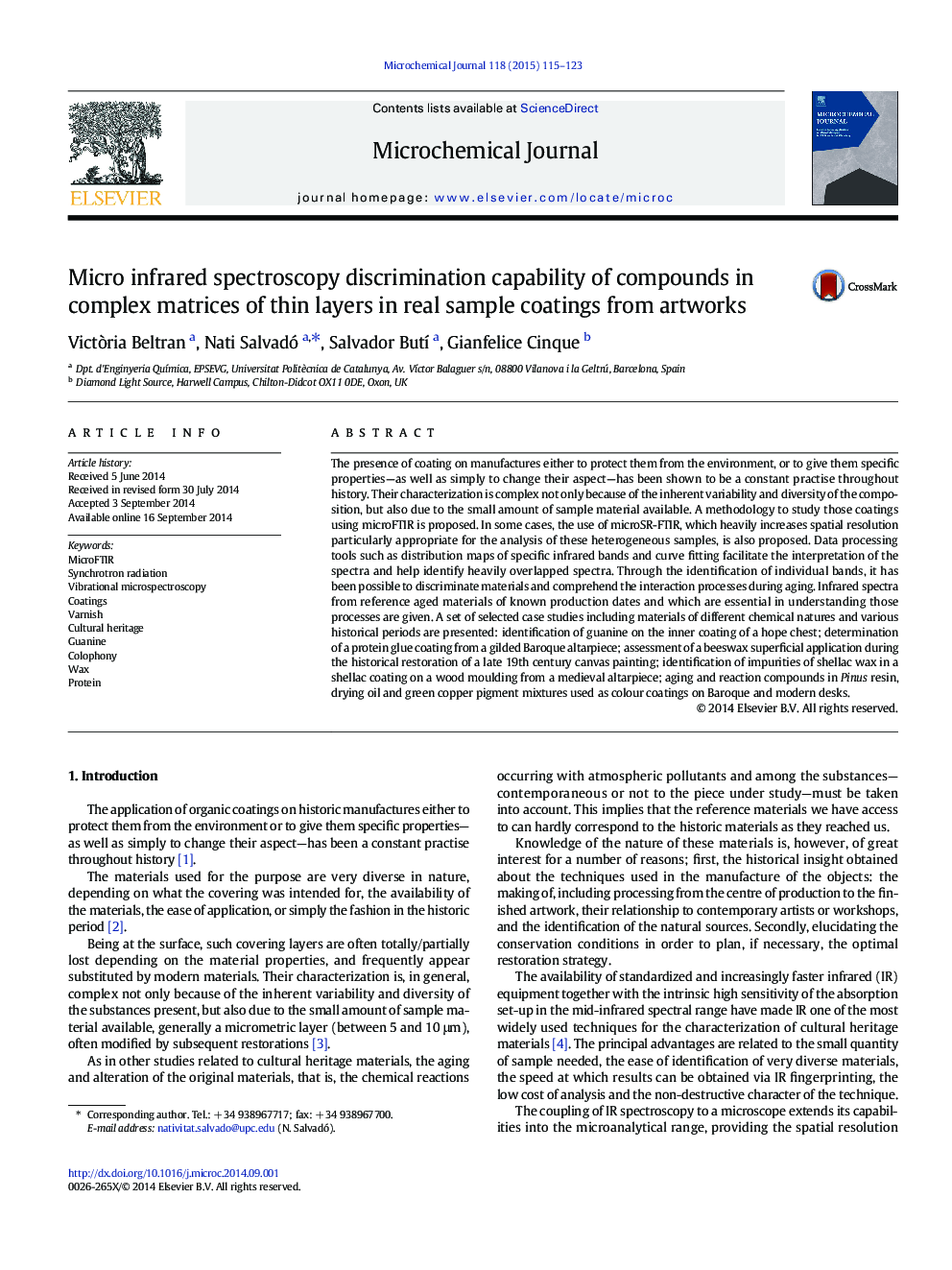| Article ID | Journal | Published Year | Pages | File Type |
|---|---|---|---|---|
| 7642715 | Microchemical Journal | 2015 | 9 Pages |
Abstract
The presence of coating on manufactures either to protect them from the environment, or to give them specific properties-as well as simply to change their aspect-has been shown to be a constant practise throughout history. Their characterization is complex not only because of the inherent variability and diversity of the composition, but also due to the small amount of sample material available. A methodology to study those coatings using microFTIR is proposed. In some cases, the use of microSR-FTIR, which heavily increases spatial resolution particularly appropriate for the analysis of these heterogeneous samples, is also proposed. Data processing tools such as distribution maps of specific infrared bands and curve fitting facilitate the interpretation of the spectra and help identify heavily overlapped spectra. Through the identification of individual bands, it has been possible to discriminate materials and comprehend the interaction processes during aging. Infrared spectra from reference aged materials of known production dates and which are essential in understanding those processes are given. A set of selected case studies including materials of different chemical natures and various historical periods are presented: identification of guanine on the inner coating of a hope chest; determination of a protein glue coating from a gilded Baroque altarpiece; assessment of a beeswax superficial application during the historical restoration of a late 19th century canvas painting; identification of impurities of shellac wax in a shellac coating on a wood moulding from a medieval altarpiece; aging and reaction compounds in Pinus resin, drying oil and green copper pigment mixtures used as colour coatings on Baroque and modern desks.
Related Topics
Physical Sciences and Engineering
Chemistry
Analytical Chemistry
Authors
Victòria Beltran, Nati Salvadó, Salvador ButÃ, Gianfelice Cinque,
